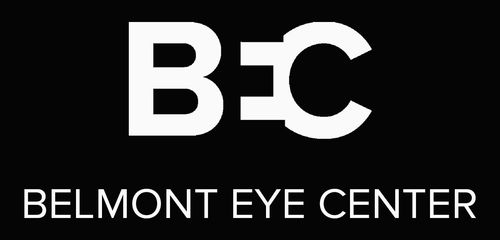At Belmont Eye Center, we’re always looking ahead—literally and figuratively—when it comes to advancements in vision science. A groundbreaking new technology may soon expand how humans see the world: contact lenses that allow wearers to see infrared light, previously only visible through bulky night-vision goggles.
Developed by a team at the University of Science and Technology of China (USTC), these first-of-their-kind lenses use specialized nanoparticles to convert near-infrared light (800–1,600 nm) into visible light (400–700 nm), essentially giving the human eye a new sensory superpower.
These soft contact lenses are infused with rare-earth nanoparticles—specifically ytterbium and erbium—that glow when exposed to infrared radiation. This process, called upconversion, allows invisible infrared signals to be perceived by the human eye.
Even more surprising? The lenses continue to work with your eyes closed, since near-infrared light can penetrate eyelids. Test participants were able to detect flashing infrared signals and even decode Morse code from an LED source.
Though still in early development, these infrared lenses open the door to some powerful potential applications:
-
Medical Use: Surgeons could use them during near-infrared fluorescence imaging to locate tumors without bulky headsets.
-
Security and Anti-Counterfeiting: The lenses could detect invisible infrared marks used to verify authenticity of products or documents.
-
Rescue and Safety: First responders could locate heat-emitting bodies in low-visibility conditions.
Compared to traditional night-vision goggles, the lenses are lightweight, wearable all day, and potentially more affordable, with early prototypes estimated at around $200 per pair.
Like any new technology, there are challenges. Current versions only detect strong infrared sources like LEDs, not low-level ambient infrared. The image resolution is also blurry due to how the nanoparticles scatter light. Researchers are working to improve clarity and sensitivity by refining the lenses’ nanoparticle composition.
Still, this innovation represents a huge leap in wearable optics and sensory enhancement. As neuroscientist Yuqian Ma of USTC said, “We have overcome the physiological limitations of human vision, as if opening a brand-new window onto the world.”
At Belmont Eye Center, we see this research as a glimpse into what’s coming next—not just for augmented vision, but for how we understand and care for the human eye. Whether it’s laser cataract surgery, customized lens implants, or future-forward tech like this, the boundary between science fiction and everyday life is disappearing fast.
Interested in Advanced Vision Solutions?
Schedule a consultation with our specialists today to learn how we can improve your vision with the latest proven technology in eye care.
